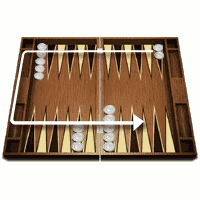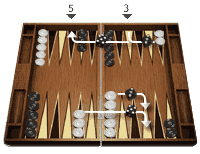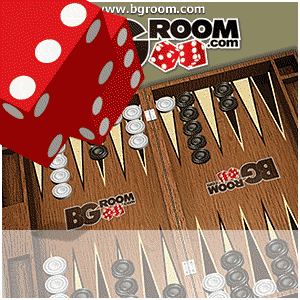
Moving Checkers
Once the board setup is complete, each player rolls a die. Backgammon rules state that whichever player has the higher number begins the game and the two numbers indicate already the player's first move. The checkers move in a U-shaped path (See Picture) headed to the number 1 point. Moving checkers can only be in a forward movement, to a lower-numbered point, or pip. There are a few Backgammon rules in moving checkers:
- Moving checkers in a U-shaped path never going backwards (each player in opposite direction).
- Each die indicates a separate number of pips moved. If a player rolls a 5 and a 3 then he can move one checker 5 points and another checker 3 points, or move a single checker 8 points.
- Moving checkers only to points that are open. An open point is an empty space or only has one of the opponent's checkers, a blot.
- If a player rolls doubles then he plays as if he rolled 4 dice with the same number. Let's take for example a player rolls 2's, moving checkers in these 5 options:
- One checker 8 points
- One checker 6 points and another 2 points
- Two checkers 4 points each
- Two checkers 2 points each and a third checker 4 points
- Four different checkers 2 points each
- There is no limit to how many checkers can be placed on a single point, as long as the opponent is not occupying the point with two or more of his checkers.
- If a player can make a legal move using both dice then they cannot pass in standard Backgammon rules.
- If a player cannot make a legal move from the two different numbers rolled, then they must first start moving checkers with the higher number. If they cannot use the higher number then they use the lower number. If neither numbers can be used then the player may pass on that play not moving checkers at all.
Written by: Gary Tenaglia.



